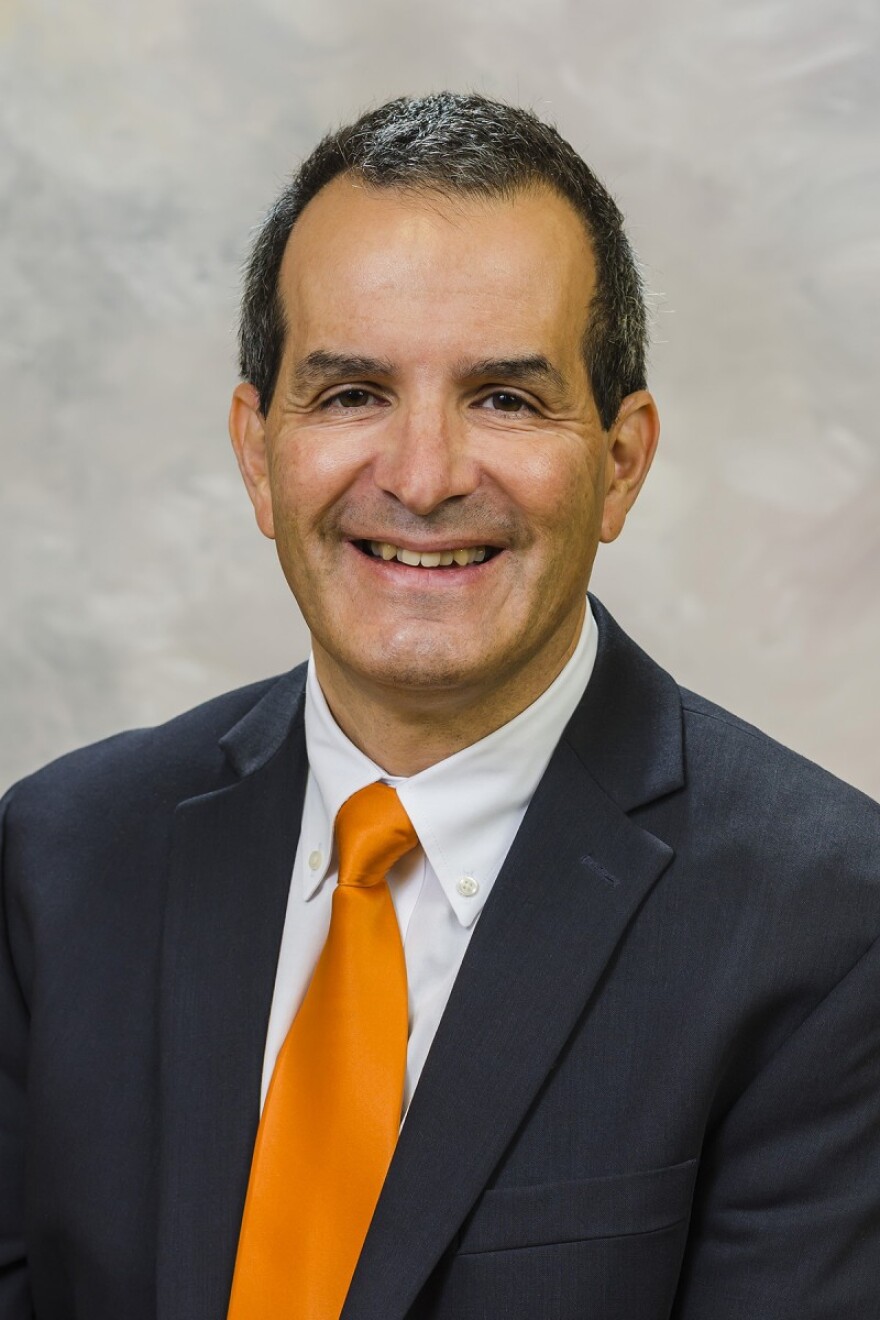Low vaccination rates, human behavior, and viral mutations may mean COVID will never end. That's according to many experts, including OSF HealthCare Chief Operating Officer Mike Cruz.
"We're going to get more and more exposures because we are so facile in commuting. I think the likelihood is high that No. 1, we're going to learn to live with this. And that this will be the last one for another 100 years? Likely not," said Cruz.
Cruz said so far there is a disconnect in the minds of many about vaccination for the flu, childhood maladies, and vaccination for COVID. He said it will help society cope with the disease if people can learn to widely accept the need for regular COVID vaccinations.
Healthcare institutions will have to look different than they do now under endless COVID, according to Cruz. Healthcare traditionally has not had the ability to change its response time, staff expansion and contraction, and resiliency quickly because of tight regulatory and reimbursement structures, he said.

"The answer I believe — and we're planning for that — is, how do you rightsize for when this reaches a steady state? And then how do we build in capabilities to expand and contract with a lot of flexibility?" said Cruz.
Cruz said increased technology and remote delivery of care will help. He said even something as unusual as doctors remotely using robots with tactile feedback to physically examine patients may be less than five to 10 years away.
The pandemic has also proved disruptive to healthcare institutions beyond caregiving. Cruz said the staffing, profit-loss, and reimbursement structures in healthcare were already strained before the pandemic, and COVID has accelerated the need for change.
"The future is still going to have a patient at a bedside requiring a lot of services. The question is, is the bed in the hospital? Is it at home? How much virtual components and technology to bring the bedside? Because you don't have the demand for those kind of ICU services, except for these once in a 30-40 years, can we pivot services staff bring to the bedside AI technology?" said Cruz.
Healthcare institutions have been engaged in segmentation for decades in urban areas with one institution providing a particular service such as heart transplants, another offering cancer treatments, and yet another a burn unit. Segmentation is less pronounced in areas like central Illinois that have midsized communities, but even here, there are specialties a patient must go to Peoria or Urbana to find.
Cruz said the pandemic will be a "forcing function" to accelerate existing trends.
"Some regionalization is going to probably have to occur because not everybody can afford to do that kind of high-end work. We already have some understanding of what decentralization and regionalization of some services would be needed. Once the pandemic is here, we're all swimming in it. You know, we're gonna have to have a certain level that we all have to have some baseline level, there are certain intense services we just can't provide," said Cruz.
"I think the workforce of the future is going to have to look different we train we educate we competency, how do we use simulation AI to support services, and to really allow the clinician of the future to do what they really need to do. So their time effort is really around their brain power and their their competency," said Cruz.
The pandemic is also accelerating existing trends in how money flows through the healthcare system.
"Think about Medicare Advantage, that's a really good example. Medicare versus Medicare Advantage, the movement, the last five to 10 years has really been impressive. That's not going to turn around and go backwards. Is that a bad thing? No. Think about patients who don't have access, or who can't pay for those out of pocket costs. If it's a coinsurance and copay, you get hospitalized," said Cruz.
But in the end, there will have to be significant reconfiguration of who pays.
"You know, there's medical toxicity, and there's financial toxicity, and patients and payers are putting pressure on. So that's really gonna force the providers, hospitals, doctors, insurance companies and so on to say, are we gonna be able to execute on this? And how is that movement going to continue to occur because the employer based model, although good, and great for a lot of us, and it used to be a great tool to go to work at a shop that said, Hey, these are benefits for employment, you can only offset that long enough far enough. And so the costs are are going to be a pinching point," said Cruz.
He said the federal government has a lot of control and say on how that gets done. And that is tied to politics, which raises the level of uncertainty about what will happen and when.
Copyright 2021 WGLT. To see more, visit WGLT.


